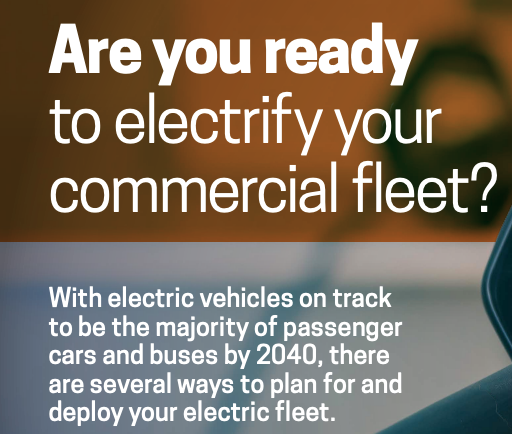“Are you ready to electrify your commercial fleet?” By Brent Johnson Principal, Sage Energy Consulting, an NV5 Company
With electric vehicles on track to be the majority of passenger cars and buses by 2040. There are several ways to plan for and deploy your electric fleet.
Demand for electric vehicles (EVs) is skyrocketing with the convergence of several trends sweeping the industry. A combination of policy, improvements in battery technology and cost, improving availability of charging infrastructure. And deployment of new compelling models from automakers, has many commercial operations looking at fleet electrification. Having a plan in place from the beginning that factors in a company’s goals, fleet needs and constraints will facilitate a smooth and cost-effective transition.
A multitude of reasons to pursue an EV fleet will impact the process, including fulfilling corporate mandates, meeting statutory or regulatory requirements, taking advantage of incentives, and proactively planning for an all-electric future. Therefore, a company’s unique motivations will dictate the framework and timeline to plan for and deploy this new fleet.
Recommended for you. Electric vehicles with mixed reception from American consumers – Pew Research Center
Having a plan for electric vehicles
Firstly, location is a major consideration. Geography and markets are critical as to how quickly and how much funding support is available for electrifying your fleet.
For example, with California leading the EV market, a business operating. Firstly, there can tap into the Clean Vehicle Rebate Project (CVRP), offers up to $4,500 to lease or purchase a new plug-in hybrid electric, battery electric, or fuel cell electric vehicle. Secondly, more lucrative is the Hybrid and Zero-Emission Truck and Bus Voucher Incentive Project (HVIP). Moreover, offering up to $315,000 to purchase or lease a new zeroemission or hybrid truck or bus.
Other programs include utility programs to fund and construct charging infrastructure, local air board funds, and state level grants to incentivize clean air vehicles. Low Carbon Fuel Standard (LCFS) credits are another substantial incentive in California. That should be factored into Total Cost of Ownership (TCO) calculations.
Operating in a state or locality without statutory incentives for drivers of EVs requires additional planning to make a project pencil. In general, though, fuel and maintenance savings with EVs offset the higher initial cost of ownership. One Indiana police chief expected to save $20,000 over the lifetime of each Tesla Model 3 he bought to replace his department’s Dodge Charger squad cars. He reported that the EVs are paying for themselves even faster than expected, within about 19 months.
Motivation and location will inform the foundation of a business’s EV strategy. But next it’s important to consider the type of EVs you need based on the job requirements. Reviewing data from existing fleet vehicle usage helps make this decision. Climate, terrain, speed, traffic, etc. all should be considered when considering EV replacement. Telematics data is particularly useful in determining which vehicles can easily be replaced with EVs currently available in the marketplace.
EV technology
EV technology is rapidly evolving, with new models announced and coming to market across the different vehicle classes. Replacing every vehicle with a zeroemissions counterpart may not be feasible with today’s offerings. But even though medium and heavy-duty electric vehicles may take several years to achieve widespread adoption, it’s possible to begin testing them on a small scale in specific applications, such as last-mile deliveries.
One critical aspect to consider, of course, is how and when we charged these new electric vehicles.This typically means building new charging infrastructure and creating new loads on the local grid. Charging a dozen or so Class 1 or 2 EVs is different from daily charging of 50 or 100 vehicles. And if these are in the heavier classes, this could mean significant new loads for a facility.
It’s significantly easier to charge a fleet that returns to base or another central location each night (or day), versus vehicles that are stored in multiple locations (such as employees’ homes or on overnight travel). Coordinating with your utility early in the process and planning for electricity as your new fuel. It is critical to the success of larger fleet deployments. As EV fleets scale, software that helps manage charging (Charge Management Systems, or CMS) and power resiliency (in the event of an outage) are also important considerations.
Many companies are evaluating the viability of on-site solar, stationary battery storage. And other forms of electricity generation to mitigate cost, support resiliency and meet broader sustainability initiatives. But depending on location, existing incentives and utility constraints, this isn’t feasible or cost-effective everywhere for every fleet.
Conclusion
The bottom line is that it’s important to remember that fleet electrification is still in its early days. And is rapidly evolving, so it’s okay to start small. There are many good incentives out there that can make pilots affordable, sometimes at even lower costs than your current internal combustion vehicles require. Starting small, careful planning and a flexible fleet strategy are key for a successful fleet transition over time.


